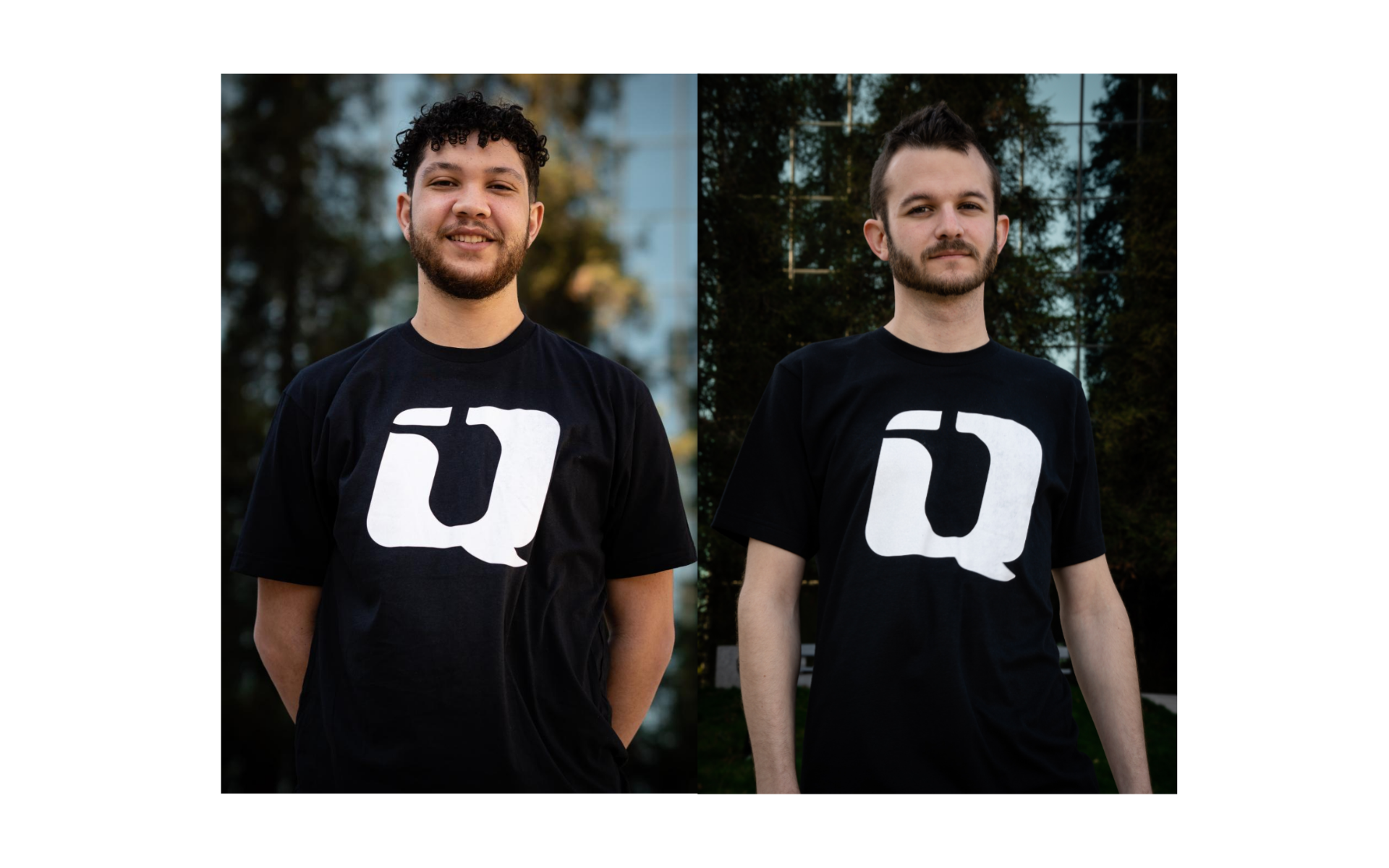Michael Fogel (left) and Riley Fort (right) are two members of the CSUDH Esports program who helped bring the CVL into reality. Photo by Darlene Maes.
By Jeremy Gonzalez, Co-Sports Editor and Daniel Diaz, Staff Reporter
Imagine a competitive esports league where college students can showcase their skills on the screen and behind the scenes. Two members of the CSUDH Esports program did, and then they made it happen.
Similar to a traditional sports league, the esports conference takes place over several months and pits esports teams from different universities in the state and across the country against each other, ending in an intense playoff tournament where one team is crowned as the champion.
This idea was applied to the PC game Valorant and brought to life as the Collegiate Valorant League by CSUDH alumnus Riley Fort and graduating senior Michael Fogel, who are both members of the CSUDH Esports program. The league is hosted by The Gamer’s EDU, an organization that advocates for student gamers and gives them a platform to campaign for themselves and each other.
Fort graduated last semester with a degree in computer science and became involved with the esports team when he stumbled upon the esports club having a Super Smash Bros. gaming session in one of the conference rooms on campus. He connected with the club’s academic advisor and general manager, Ruben Caputo, and joined the club, bringing his knowledge of speed running with him.
Fogel, a computer science major who will be graduating in May, became involved with the esports team shortly after the pandemic caused the nationwide shutdown last March. He founded the CSUDH Valorant team and now serves as the team’s captain. Although he was happy to be onboard, Fogel said he felt like something was missing in the esports landscape.
“Since I was in middle school, I’ve always been in esports, but I saw a hole in college esports,” Fogel said. “Rivalries were not in place like real athletics. I saw the pandemic as an opportunity of keeping all the CSUs together. I saw it as a way to help kids get into the professional scene.”
The first season of the league, which ran from August through December 2020, consisted of various esports teams from some of the CSU campuses. The instant success from the first season brought attention to the league and other institutions like Oregon State University, Texas A&M University and the University of Houston wanted to join in on the competition.
“I always had faith that people would want to play and we would make something happen,” Fogel said. “I had a really good team around me to accomplish that goal. Riley has done amazing production, Ruben has secured great sponsorships. People are reaching out to get in and we felt it was going to spread to more than just California schools.”
The new season of the CVL kicked off in February and will run through May 7. It features 40 teams from 30 different campuses across the country, pitting them against each other as they fight to qualify for the finals tournament for their chance to be crowned champions.
Due to Valorant being such a new game, released in 2020, different initial bugs and changes affected CVL streaming. Riot Games, the game’s developer, had yet to even introduce official rules for league play, leaving Fort, Fogel and the CVL to figure it out as they went along.
“Trying to keep up with the bugs and compensate for the changes was difficult to do on the fly,” Fort said.
One of the bigger problems for Fogel was scheduling and preparing for any changes during the course of the season.
“We had a team drop halfway through and we had to fix the schedule for the remainder of the season,” Fogel said. “Now it’s running really well.”
As the second season approaches, the CVL looks ahead at what they can do to improve and how far they’ve come. The main focus for season two is to bring in more schools and teams to compete in the league. The ultimate goal of the CVL is to create a place for everyone to be able to play.
“We just wanted to bring more schools in,” Fogel said. “We took notes on how to improve our production and we took the offseason to work on really making our product the best it can be.”
Besides participants, the number of employees working on the production of the league has grown exponentially, to the point where they even offer internship opportunities worth college credits.
“Last season we were a team of four,” Fort said. “Now, we are offering internships for season 2 in graphic design, content creation, video production and more. They receive credit at their institutions for the internships through the CSU Entertainment Alliance.”
The CSU Entertainment Alliance works with 23 campuses, offering grants and internships for career development, networking opportunities, and a “foot in the door” in a competitive field. They also have partnerships with companies like Disney, Netflix, Sony, and Apple, offering other internships and collaboration opportunities.
The CVL takes the top talent of the league and offers professional organizations and teams the opportunity to scout some of that top talent, serving as a stepping stone or launching pad between the collegiate and professional levels.
Although the second season has been a big success, Fogel and Fort believe there are always ways for the league to be better no matter how far the CVL has come.
“Last season we didn’t think of having crazy replays and a 3D model in our introduction,” Fogel said. “There’s always going to be room for improvement. We’re products of the CSU system and it’s cool to put CSUDH and other CSUs on the map.”

